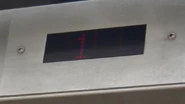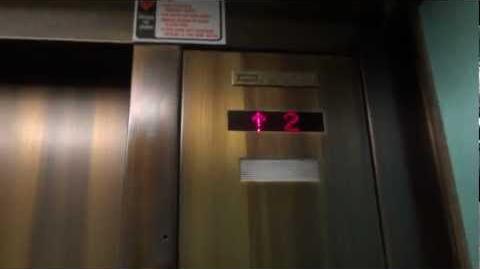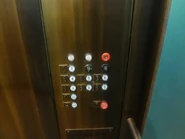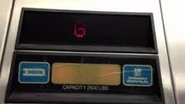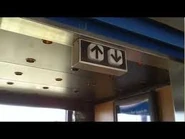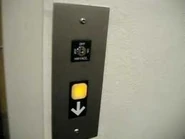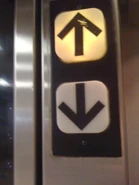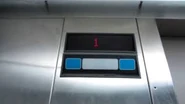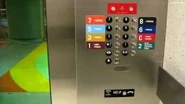m (→Impulse) |
CubsRule2040 (talk | contribs) (→Traditional: There is a brochure from the 90s that lists these fixtures as "Classic") |
||
| Line 12: | Line 12: | ||
===Traditional=== |
===Traditional=== |
||
| − | Dover Traditional fixtures came out in 1968 and could either be a translucent illuminating button with a black halo or a black button with an illuminating halo. Sometimes, they could be black buttons with black halos, but these were found only on Dover elevators from the late 1960s and early 1970s. The floor counters were translucent wedge shaped illuminating blocks with black numberings - these style of lanterns were also used on elevators made by Dover's British subsidiary [[Hammond & Champness]] (H+C). In the mid 1970s, the black button with the white illuminating halo started becoming less common. Also by then, digital floor counters began appearing, but dot-matrix displays began appearing in the mid-1980s. |
+ | Dover Traditional (or Classic) fixtures came out in 1968 and could either be a translucent illuminating button with a black halo or a black button with an illuminating halo. Sometimes, they could be black buttons with black halos, but these were found only on Dover elevators from the late 1960s and early 1970s. The floor counters were translucent wedge shaped illuminating blocks with black numberings - these style of lanterns were also used on elevators made by Dover's British subsidiary [[Hammond & Champness]] (H+C). In the mid 1970s, the black button with the white illuminating halo started becoming less common. Also by then, digital floor counters began appearing, but dot-matrix displays began appearing in the mid-1980s. Some elevators installed before 1990 with Traditional fixtures had a door close button. |
<gallery> |
<gallery> |
||
Revision as of 07:06, 18 December 2013
This is a guide to some notable fixtures of Dover elevators.
1960s-1990s
Old Dover Black Buttons
Most standard elevators were using the vintage black round buttons with white letterings during the 1960s. These buttons were made by GAL for Dover. The buttons are very simple without any illumination indication, except the hall stations, which have an in use light above the button. Additionally, there is no door close button; pressing a floor will close the door quickly and the car starts. Later on, the call buttons had a white halo around them, and an arrow on the button lit up green for up, and red for down, and the floor buttons had a white halo, which lights up when you press the button, but the door open and alarm buttons were not changed.
Traditional
Dover Traditional (or Classic) fixtures came out in 1968 and could either be a translucent illuminating button with a black halo or a black button with an illuminating halo. Sometimes, they could be black buttons with black halos, but these were found only on Dover elevators from the late 1960s and early 1970s. The floor counters were translucent wedge shaped illuminating blocks with black numberings - these style of lanterns were also used on elevators made by Dover's British subsidiary Hammond & Champness (H+C). In the mid 1970s, the black button with the white illuminating halo started becoming less common. Also by then, digital floor counters began appearing, but dot-matrix displays began appearing in the mid-1980s. Some elevators installed before 1990 with Traditional fixtures had a door close button.
Traditional vandal resistant
Not much is know about these fixtures as they are very rare, what is known is that the number in the middle lights up and the rest of the button is metal. These buttons resembles the regular Dover Traditional fixtures.
Impulse
Impulse was quite common and had a very distinctive look; it started in 1983-84. The floor counter is slanted down toward the floor as are the nameplate, emergency lights, and capacity label. The buttons are square-shaped with rounded corners and are slanted upward toward the ceiling. On some elevators, the buttons and floor counter are not slanted; these version of the Impulse are not as common as the inclined Impulse (hence called Custom Impulse by Dover[1]). From 1983 to 1994, the door close, door open, and alarm bell had blue braille plates, and from 1995 onward, the braille plates for door open, door close, and alarm bell were changed to black. Older buttons used microprocessors and lightbulbs, while later fixtures used microswitches and lightbulbs or LEDs. The indicator often used red illuminated segments that used the same look of the numbers. For buildings with more than seven floors, a true digital indicator was used. ThyssenKrupp continued on using Impulse with minor revisions through 2006. However, it is still offered on special order as of today.
Vandal Resistant
Vandal Resistant is a circle metal button with the light in the middle, the light can be either red or yellow. The indicator was either analog or digital. The analog indicator featured a black circle around the numbers, and a small light (either red or yellow) was below each black circle. The digital indicator was the same one used with Dover Traditional fixtures. These fixtures were continued by ThyssenKrupp.
Fake LED floor indicators
Dover made floor indicators that were blocks for each floor number, there would be a light that would light up that would make the dots light up in the shape of the floor number, on some of the later floor indicators they would use a matrix indicator instead of using different blocks for each number. These floor indicators were used on late Dover traditionals and most Dover Impulses, Thyssenkrupp also continued to do this. These indicators looked LED when they were not.
Floor Passing Sounds/Chimes
Dover has been using mechanical bells for decades for the directional and floor passing sounds on their elevators (some don't have a bell or floor indicator while others have no floor passing sound but with a floor counter). Beginning with the Impulse line, Dover started using electronic bells for the directional indicators (Impulse directional lanterns didn't use mechanical bells). The floor passing sound was either a piezo buzzer or a higher pitched "chirp"; these floor passing sounds were also used with the Traditional and Vandal-Resistant lines.
The "chirp" was discontinued in the mid-1990s and elevators from then on until 2011 used the piezo buzzer for the floor passing sound.





